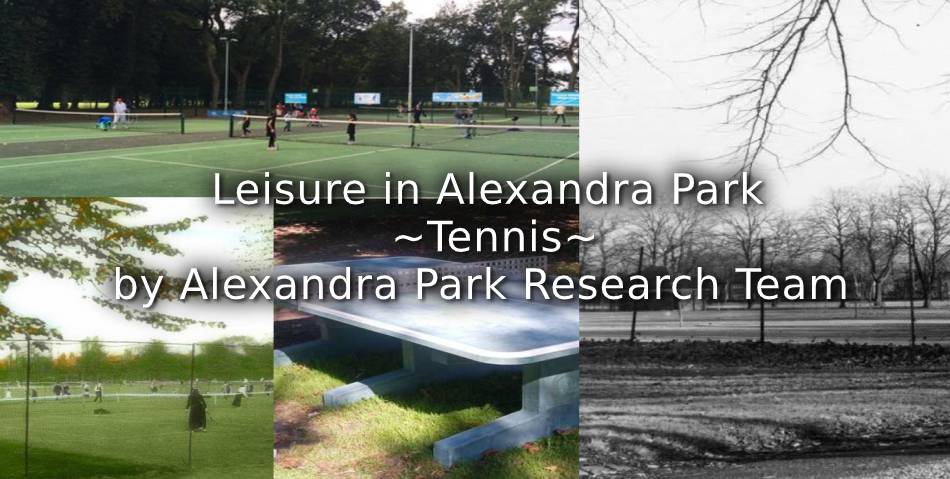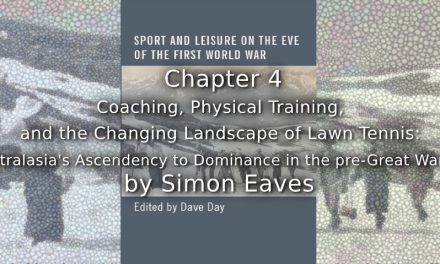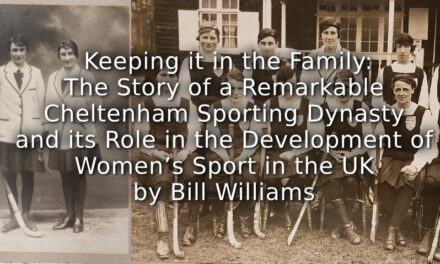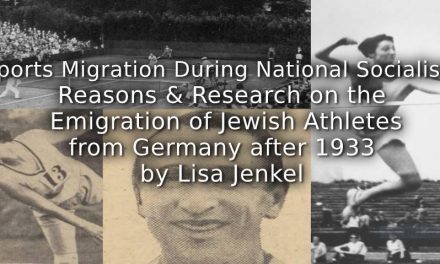Introduction
Although tennis was absent in the 1870s, it quickly became one of the park’s most popular activities. By the 1920s, the tennis courts of Alexandra Park had expanded from simple, summer, grass lawns, to include a multitude of surfaces which could be used all year round. As one of the few sports where women could participate, the tennis courts offer hints of the female sporting past of the park, although these hints are often subtle are interspersed with missed opportunities and exclusion. The history of tennis in the park is closely linked to the rise of a consumer society and the growth in leisure time, and its spaces, as a commodity. This commodity could be a lucrative one for the Corporation and as the regular expansion of the tennis courts demonstrates, it was one that the Corporation was fully aware of.
1880s: The coming of tennis
Tennis played no part in Alexandra Park during the first decade of its existence. Calls for tennis courts to be built in the grounds of the park grew in the early 1880s. In 1881, ‘Lawn Tennis’ suggested in a letter to The Manchester Guardian, that the lawns behind the refreshment pavilion would be ideal for tennis, given that prommenaders stay to the paths and a small fee could even be given. In 1883, ‘Lancashire Lad’ thought that turning Alexandra Park into a ‘great city playground’ would allow tennis and other games and sports to take place there. The first concrete (or rather grass) steps towards the construction of tennis courts was noted in the council minutes in April 1886. There, it was outlined that the grass lawn in the southeast portion of the park, near the boy’s gymnasium, were to be transformed into tennis court and approval was given to buy 6 tennis nets and 1 ground market for less that £10. As with other park locations, regulations were also adopted to ensure people behaved in the ‘correct’ manner. The measures proposed by Councillor Schou suggested that the tennis courts be open at 10, cost 2d to enter, would have an attendant who could remove those not following the rules, would have a slate to create a list of upcoming players, and would require players to have either gymnastic or lawn tennis shoes as well as their own equipment. This final provision would, no doubt, act as an exclusionary measure to many of the Manchester population who did not poses tennis equipment and underlines that while the park was a ‘People’s Park’, it also included pockets of space which were largely exclusive by virtue of money, gender or behaviour.
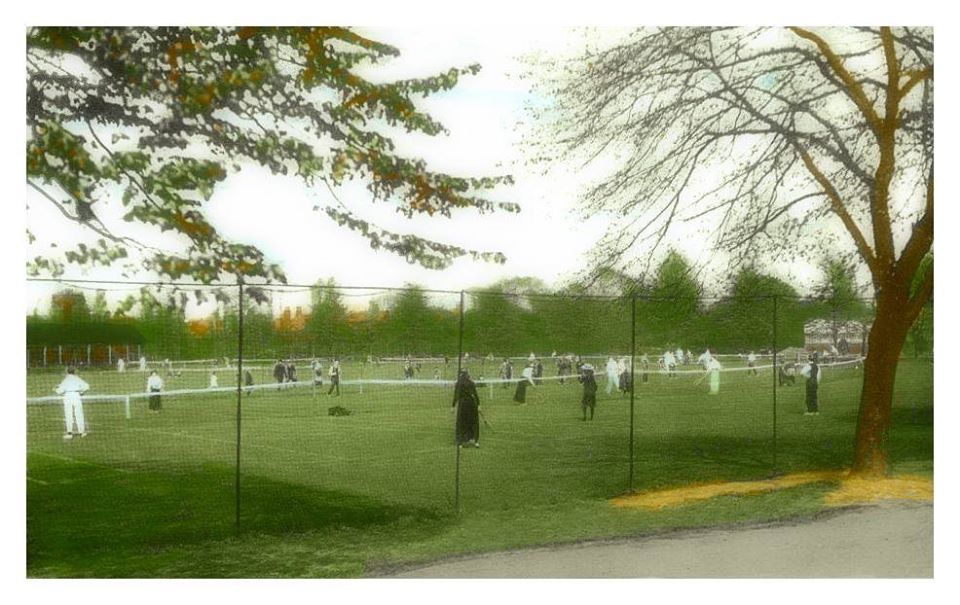
Anyone for tennis? 1907
Courtesy of Archive Plus (hand tinted by Michael Stockton)
The tennis courts were completed in the high summer of 1886, but as one correspondent wrote, seemingly stopped shortly afterwards. On August 5, 1886, ‘Spectator’ wrote to The Manchester Guardian enquiring why the courts had closed after only a one-week trial and suggested that a man could be employed to maintain them. Rather than closing the courts, he added, more were needed to keep up with this popular recreation. To what extent the court were used during the summer and autumn is unclear, a note in the minutes suggests they were formally closed for the year along with the bowling green in early October, however, ‘Spectator’s’ plea, seemed to have been answered. In November 1896, the City Surveyor was tasked with creating new sketches to extend the tennis courts in the park and plots near Chorlton Lodge and either side of the main walkway with a ‘view to the consideration as to the
desirability or otherwise of utilising the plots referred to as lawn tennis courts.’ By April the following year, the plan for the laying of tennis courts in the easterly part of the park had been approved by the corporation and in June 1887, the council noted that they had opened. The courts were clearly used during the summer, but it seemed in their construction one aspect had been overlooked; the somewhat erratic nature of play in the park. In July, 1887, minutes report that several tennis players in Alexandra Park had requested that ‘stop nets’ be placed on two sides of the court, against the shrubbery to one side and the main walk on the other, for the convenience of the players. While popular, the new facilities would require constant financial outlay for the committee and provide more work for the Head Gardener.
The 1890s: A place for women – sometimes.
The 1890s began with a renewed call for further tennis courts, better marking and earlier opening times in the summer. This call was also linked to the changing leisure fashions of the time and shift in the role of parks from places of stately leisure, to sites of more active recreation. Park users were also becoming consumers with increasing demands of public space and those who organised it and old facilities needed renewing. In 1894, Alexandra Park was granted new nets by the council. The expanding sporting landscape also saw tournaments held across Manchester. While there are no references to tennis tournaments held in Alexandra Park in the nineteenth century, 1894 saw and Alexandra Park club compete in a local tournament, suggesting that, as with bowls, the park became the location for the formation of local clubs and associations. Alexandra Park was not unique in providing tennis courts to its local community and the development of Birchfields in the late 1880s, with its array of sporting facilities, demonstrated that tennis was increasingly popular in Manchester. Elsewhere, courts could be found by the late 1890s in Phillips Park, Cheetham Park, and in a number of newly developed recreation grounds. However, by the late 1890s, Alexandra Park was one of Manchester’s most popular tennis locations. In 1895, nearly 3,000 people paid to play on its courts, figures which stayed fairly steady over the last few years of the century. These numbers helped the courts returned a healthy profit to the corporation before 1900, although it lagged far behind that generated at Birchfields.
A number of those participants were women and letters to the committee hint at the role tennis could play in the lives of local women. As one of the few public activities which both sexes were permitted to enjoy, tennis was an important exception in Victorian sport, which allowed women to perform beyond the private sphere of the home and domestic duty. That tennis required no physical contact, could be played without a loss of decorum, and include a net to separate individuals was certainly an important element here. In 1898, a joint letter from Mr A Moss and Miss Hodkinson, requested that the tennis courts be open earlier in the summer. However, we must not ignore that social status played a part in allowing certain women to play. In 1899, Mrs Setta Axon wrote o the Park and Cemeteries’ Committee with a request that highlight that local working women were active in forming sporting organisations, but that they faced more barriers to entry than others. Mrs Setta Axon had requested to rent some of the tennis courts at Alexandra Park on three evenings a week to be used by local working girls who had formed a club as part of the Domestic Mission in Renshaw Street Hulme. Emphasising the social mission at hand, Mrs Setta Axon, noted that they were mainly poorer girls from the Hulme and Chorlton area, who could not afford to travel far or pay too much rent. As was common with many decisions, the minutes simply note that the committee was unable to comply with the request, allowing us to only suggest that reasons of class, gender, a complex mix of both, or simple lack of space, lay behind such decisions. However, such stories give a glimpse of a sporting past that is often ignored, one belonging to working women who formed local groups to participate in sport. In such cases, spatial restrictions, imposed by male committees and organisations, provided another barrier to wider participation; without access to local facilities, recreation was impossible for many. Once again this highlights the limitations to the concept of Alexandra Park as a ‘People’s Park’.
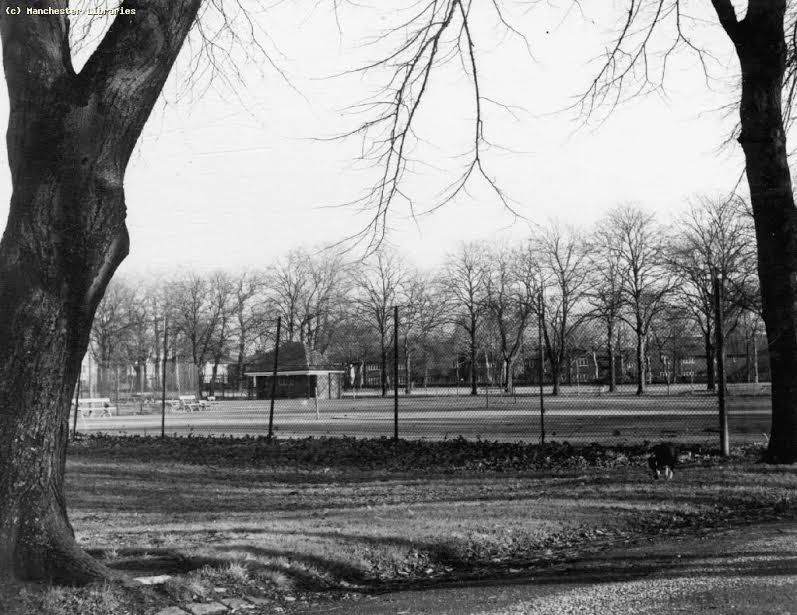
The Tennis Courts in 1971
Courtesy of Archive Plus
1900 to 1930: More courts, more players, and more success.
However, other women found spaces to play and in the early 1900s, Alexandra Park was one of them. A report from the Manchester Courier and Lancashire General Advertiser from 1909 detailed the end of the Northern Ladies tennis club season. Following a series of matches against teams from Kensal, Fulshaw and West Didsbury, it was noted that they would be ‘breaking new ground’ by sending a team to Alexandra Park, a match that would serve an ‘educational purpose’ and ‘lend encouragement to the players in the parks.’ Such reports suggest that while Alexandra Park was patronised extensively, female participation in the Alexandra Park community was either low in numbers or standard.
While the park was immensely popular with local tennis players, the quality of tennis played at the park throughout the 1900s, remains in doubt. For each positive report, there seems another which suggest a less positive outcome. On the positive side, in 1913, the Alexandra Park tennis second team went undefeated in tehri championship season. Topping the second league, they were rewarded with the Bythell Shield for their achievement. However, just six days later, reports from the Manchester Parks Tennis Championships, suggested that no players from Alexandra Park clubs had made an impression. Despite such indifferent results, the popularity of the courts with the local public meant expansion and improvement. In April 1914, the Manchester Evening News reported that Alexandra Park was likely to receive two new ‘hard courts’ later in the year. In May of that year, the park boasted 8 tennis courts for play. These courts were, no doubt, central to the development of organised league tennis in Manchester and, as had happened in bowls, leagues and clubs were established around the parks. The Manchester and District Parks League was one of these and Alexandra Park often competed in it. Indicating how league matches were organised, the Manchester Courier and Lancashire General Advertiser, carried a report in June 1914 with full results. Notable amongst these were the parallel games taking place between Alexandra Park and Peel Park clubs on their respective grounds; a series won by Alexandra Park by a total of 7 matches to 3 at home and 10 to 0 away.
By 1915, the constant changes in the facilities had yielded an additional 2 courts using the ‘red shale ground principle’ taking the total to 12 and permitting play to occur in all year round. The development of hard courts provided those who operated them with an almost year-round guaranteed source of income. Such developments in spatial leisure technology were a common part of the period from the mid-19th century onwards, as urban space became more precious, new ways of maximising its use helped construct a new form of leisure, extending the availability of sport and games beyond their usual season or clientele; in Alexandra Park winter tennis occurred in the 1920s to add to the games which took place during the traditional summer season. These new hard courts were the site for the Alexandra Park Tennis Championship of 1919, which ‘proved a great success’ and ‘aroused considerable interest in the locality.’ In this way, the tennis courts of Alexandra Park had both tapped into the expanding consumer interest in playing tennis and the increasing interest in spectator sport as a leisure pastime and by the 1920s, Manchester boasted over 150 tennis courts in its environs. Players did not just want to play, but many wanted to improve; this saw the growth of coaching as a professional activity and in 1921, Mr R Nash, a ‘professional lawn tennis coach’ took his skills to the hard courts of Alexandra Park for free evening sessions.
By the mid-1920s, Alexandra Park tennis players were enjoying more success on the court. In 1922, the Alexandra Park First Team narrowly lost the First Division Championship in a play-off with the Victoria team, while the seconds again won their division. In 1923, the Firsts claimed the Ramsbottom shield and the seconds retained the Blythell shield. At the Manchester and Salford Parks Championships of 1926 in Didsbury, reports highlighted the quality of the Alexandra Park players; and in May 1928, the Alexandra Park team, which had been champions of the first division for the previous 3 years, easily defeated Albert Park, only dropping 3 sets of the 45 played. The 1920s was certainly a golden age for Alexandra Park Tennis.
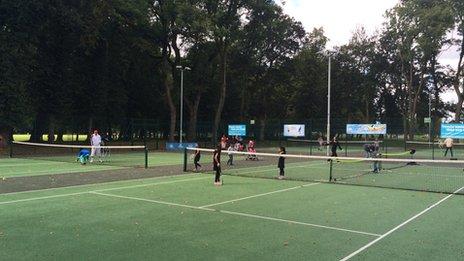
Repositioned Tennis Courts after the Restoration
Image from Sport England
Pre/Post Restoration of the Tennis Courts
In the 80’s,90’s and the beginning of the 0’s what remained of the tennis courts, at the back of the now boarded up Pavillion on the Southern Oval, were still being used by a few ‘hardy’ players. There were only two nets remaining, one of which was always permanently drooping, but games were conducted on a good weather day.
At the start of the restoration of Alexandra Park, and the decision of creating a purpose built professional cricket pitch on the Southern Oval (see previous article on Cricket in Alexandra Park’), plans were made to move the tennis courts across the Park to the back of the soon to be refurbished Park depot. There were originally eight courts planned, but in the end four were constructed, with a new all weather surface for playing on and to be enclosed by a high wire fence, with a special door opening system to allow entrance to the courts along with flood lighting for evening play. Some of the design features proved controversial, but in the end everyone agreed that the courts were fit for the 21st Century.
Today anyone can pre-book courts for matches or turn up and play for free if the courts are empty. In the Summer months they are always very busy, and as an extra feature, the ‘Friends’ paid for a table tennis table to be installed outside the courts as an extra bit of fun, which is also well used.
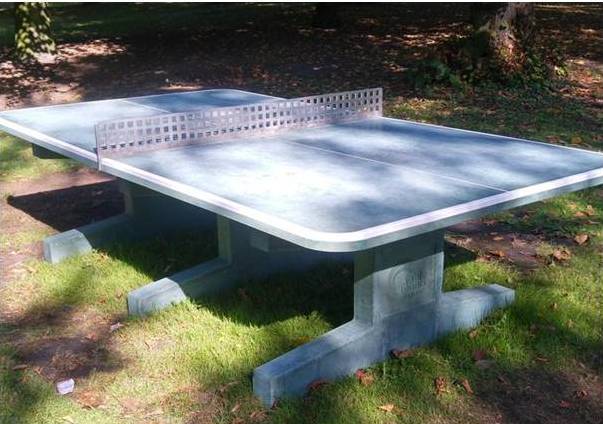
Ping Pong Table
Photo credit – Phil Dalston
Summary
While tennis arrived late to the park in the mid-1880s, it quickly developed into an important activity. While it was a space where women could take part in active recreation, it was also one which could exclude many from play; a combination of committees, clothing regulations and grounds fees, perhaps put an end to the hopes of many local participants. However, Alexandra Park was the site of constant construction and expansion of the tennis courts. By the 1920s, it was home to a variety of courts and could boast the best tennis team in the Manchester area. This expansion capitalised on the increasing popularity of leisure and sport amongst the public and along with the other courts in Manchester, suggested that tennis was thriving by the 1930s.

